Increase profits with bed bug eradication services
Let bed bugs breed profit.
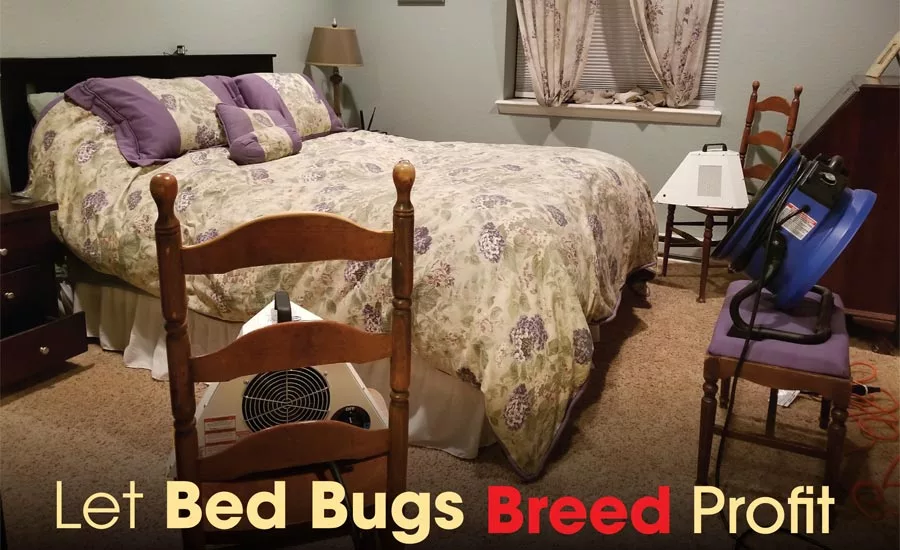
Photos courtesy of Colorado Tri-Flo Systems
As a restoration professional you have several unique advantages in adding bed bug eradication to your service portfolio to generate additional revenue. First, you already have a majority of the equipment needed to conduct eradications and secondly you have comprehensive and expert knowledge of airflow.
You have vehicles, staff, fans, cordage and power distribution boxes. All that is needed to complete the program are the proper heaters and knowledge on how to apply them to kill bed bugs. The focused use of heated airflow is the key to successful bed bug eradications and the learning curve for a restoration technician is much shorter than for any other service professional. Having used directed and general airflow on numerous dry-outs, utilizing convective heat in a bed bug eradication will appear simple and routine compared to drying out saturated structures and conducting extensive mold remediation.
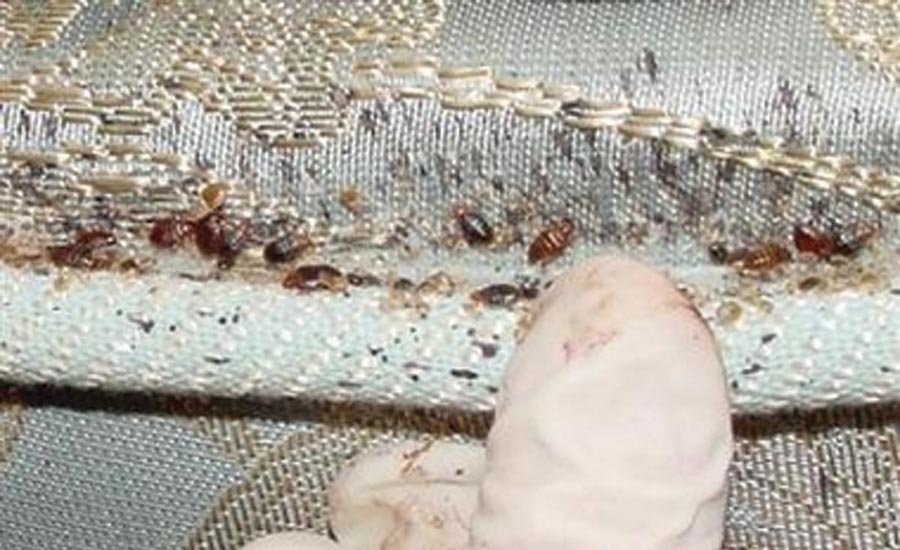
Photos courtesy of Colorado Tri-Flo Systems
All bed bug heat eradications revolve around the basics of the power on the site, the level of infestation, construction of the room relative to heat loss and the size of the space to be heated. Based on these factors you can determine the proper heater to use and how to direct the fan airflow to maximize the convective effect of heated air. This airflow is what kills the bugs and penetrates heat into the walls and baseboards where they harbor. Similar to a convection oven.
Identifying bed bugs is not complex as they leave tell-tale signs of fecal material and blood on mattresses and box springs. They reside typically within 10 feet of beds or areas where people sleep or spend extensive amounts of time. They live and feed on human blood.
Heat has now been proven in the pest control industry to be the most efficient and safe means to kill bed bugs in all stages of their development and harbor-ages.1 By using heat as your methodology to kill bed bugs you can avoid the use of chemicals and problematic compounds that complicate the process and increase liabilities. Additionally, many strains of bed bugs are now immune to the typical chemicals and others have grown thicker cuticles that prohibit the penetration of compounds to kill them.2 3 4 Heat works in a very simple, efficient and effective manner and takes fewer visits to complete.5
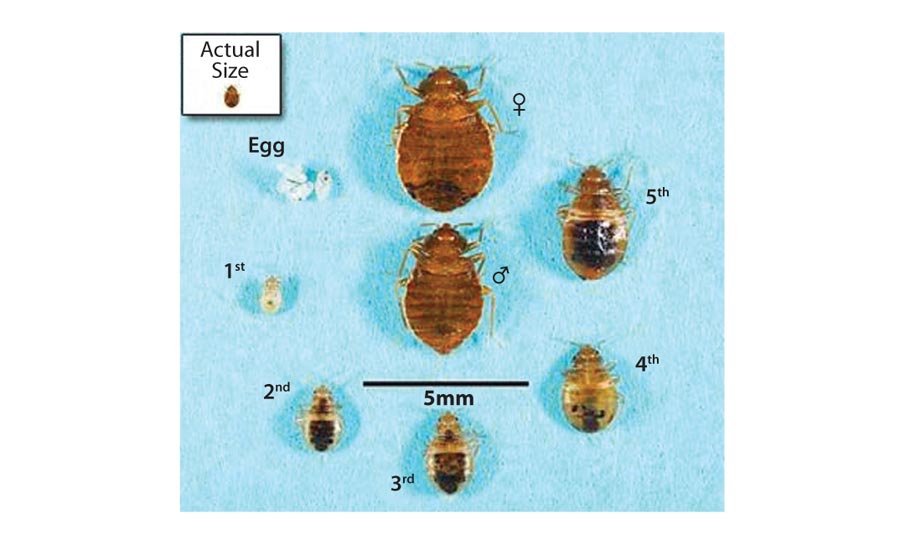
Photos courtesy of Colorado Tri-Flo Systems
Scientific studies have established that a temperature of 119°F to 121°F (48.3°C to 49.4°C) kills bed bugs in all stages. By sustaining temperatures at or above that threshold for several hours, the heat penetrates the typical hiding places favored by the bugs: headboards, mattresses, picture frames, baseboards, nightstands and any furniture adjacent to the beds. The use of penetrating heat kills bed bugs in all their stages of life: adult and the eggs and larvae hidden in the walls and baseboards of the room.
Chemicals typically need to come in contact with bed bugs, thus multiple treatments are required to kill off infestations as direct contact is needed, and residual chemicals need to be carried back into the harborages to kill the others. This takes time. Pest control companies are required to be licensed due to the application and use of chemicals. Annual recertification is often required on certain toxic chemicals. Typically, licensing is not necessary for heat treatments, however you should check with your state to be sure.
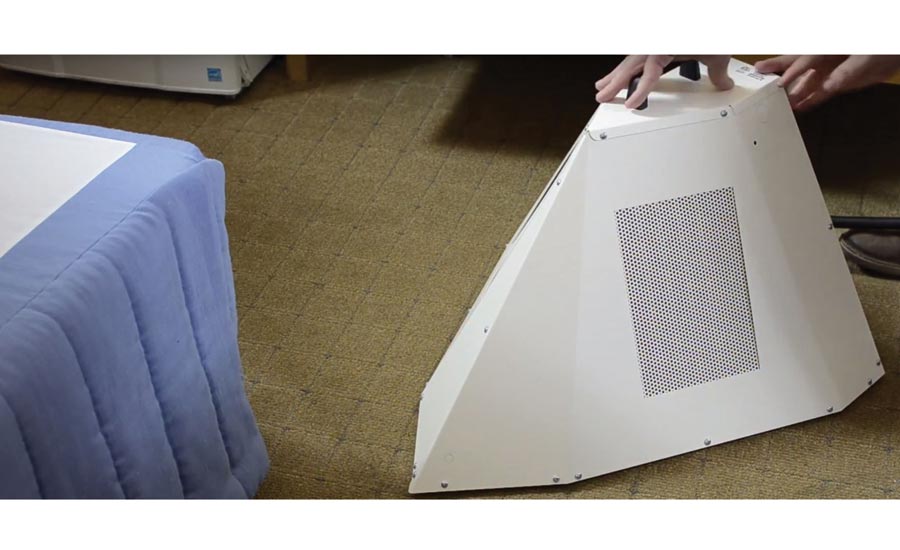
Photos courtesy of Colorado Tri-Flo Systems
The chart on the next page shows the advantages of heat over chemicals. Anticipated revenue from conducting eradications can vary based on the types of facilities you want to service, plus the room sizes, level of infestation and physical construction relative to heat loss.
There are several ways to bill for the service. One manner would be by individual eradication, based on the above elements. These would fall within the $300-$600 range vs. $500-$1,000 for chemical applications. However, you can adjust and customize per account based on your relationships and market conditions. (For a 10 x12 bedroom in Alabama it may be $500, however in Boston it may be $1,000.
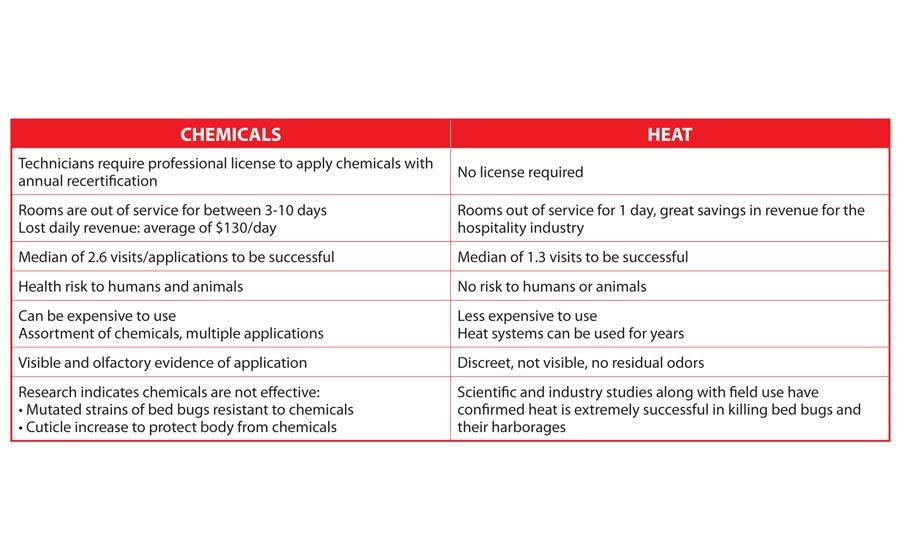
Photos courtesy of Colorado Tri-Flo Systems
Recurring Revenue
Another avenue that many pursue is a proactive treatment protocol with property management companies where you heat treat apartments when tenants move out so management can assure the new renter that the unit is bed bug free.
This is a solid source of recurring revenue. Additionally, whenever an apartment does become infested, your company is called in to treat the unit as needed per your service support contract.
Bed bugs are here to stay and anyone and any facility can be infected with them. They are the ultimate hitch hiker and can be transported anywhere across the globe. Being able to add this service to your existing business model with a very low front end investment allows you to increase your value to clients while generating additional income, all based on your level of engagement and effort.
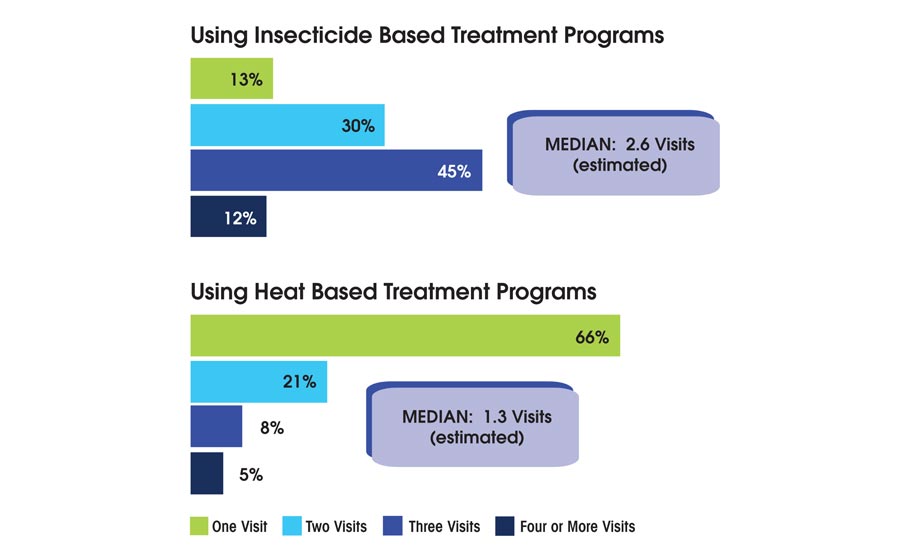
Photos courtesy of Colorado Tri-Flo Systems
Endnotes:
1 https://www.scientificamerican.com/article/bed-bug-expert-explains-defend-yourself/
2 https://www.scientificamerican.com/article/massive-resistance-bed-bugs/
3 http://journals.plos.org/plosone/article?id=10.1371/journal.pone.0153302
5 https://www.npmapestworld.org/default/assets/File/newsroom/magazine/2015/nov-dec_2015.pdf page 9
Looking for a reprint of this article?
From high-res PDFs to custom plaques, order your copy today!





